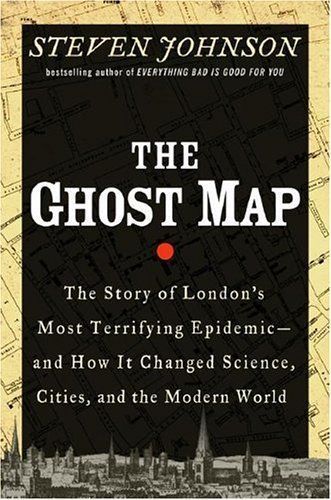
The Ghost Map The Story of London's Most Terrifying Epidemic--and how it Changed Science, Cities, and the Modern World
A historical chronicle of Victorian London's worst cholera outbreak traces the day-by-day efforts of Dr. John Snow, who put his own life on the line in his efforts to prove his previously dismissed contagion theory about how the epidemic was spreading. 80,000 first printing.
Reviews
Cindy Lieberman@chicindy
Amanda Valentin@valentin07
Kerry Gibbons@kerryiscool
Jeremy Anderberg@jeremyanderberg
Emily C Peterson@etrigg
Ben Blumenrose@blumenrose
Helen Bright@lemonista
Ryan Mateyk@the_rybrary
John Manoogian III@jm3
Kemie G@kemie
Pierke Bosschieter@pierke
Kaylee@kayleerodenberg
Juliana@soundly
Janice Hopper@archergal
Laura@lauragh
Sara Piteira @sararsp
GP@golp
Jayme Bosio@jaymeb
Loretta Dredger@lorettacd
Genevieve Soucek@gsoucek
Tony Scida@tonyskyday
Amy Bley@enginerdgirl
Alison@inkymathematician
Kali Olson@kaliobooks